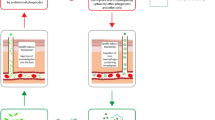Abstract
Simple, cost-effective approach for routine surveillance of parasite susceptibility to antileishmanial drug miltefosine (MIL) is highly desirable for controlling emergence of drug resistance in visceral leishmaniasis (VL). We validated a simple resazurin-based fluorimetric assay using promastigotes to track natural MIL tolerance in Leishmania donovani parasites from VL cases (n = 17) against standard amastigote assay, in two different labs in India. The inter-stage MIL susceptibility correlated strongly (r = 0.70, p = 0.0018) using J774.A.1 macrophage cell line-based amastigote assay and fluorescence-based resazurin assay for promastigotes. Investigation of inter-stage MIL susceptibility for the same set of clinical isolates in another lab also showed a strong correlation (r = 0.72, p = 0.0012) using mouse peritoneal macrophages for amastigote assay and resazurin-based alamar blue assay for promastigotes. Additionally, parasites from post-kala-azar dermal leishmaniasis (PKDL) lesions (n = 7, r = 0.78, p = 0.046) and MIL-induced parasites (r = 0.92, p = 0.0001; n = 3) also exhibited a strongly correlated inter-stage miltefosine susceptibility. Thus, our results support the utility of resazurin assay as a simplified biological tool for MIL susceptibility monitoring in clinical isolates from MIL-treated VL/PKDL patients.

Similar content being viewed by others
References
Boelaert M, Criel B, Leeuwenburg J, Van Damme W, Le Ray D, Van der Stuyft P (2000) Visceral leishmaniasis control: a public health perspective. Trans R Soc Trop Med Hyg 94:465–471
Kumar D, Kulshrestha A, Singh R, Salotra P (2009) In vitro susceptibility of field isolates of Leishmania donovani to MIL and amphotericin B: correlation with sodium antimony gluconate susceptibility and implications for treatment in areas of endemicity. Antimicrob Agents Chemother 53:835–838
Lira R, Sundar S, Makharia A, Kenney R, Gam A, Saraiva E, Sacks D (1999) Evidence that the high incidence of treatment failures in Indian kala-azar is due to the emergence of antimony-resistant strains of Leishmania donovani. J Infect Dis 180:564–567
Mikus J, Steverding D (2000) A simple colorimetric method to screen drug cytotoxicity against Leishmania using the dye Alamar Blue. ParasitolInt 48:265–269
Mukhopadhyay R, Mukherjee S, Mukherjee B, Naskar K, Mondal D, Decuypere S, Ostyn B, Prajapati VK, Sundar S, Dujardin JC, Roy S (2011) Characterisation of antimony-resistant Leishmania donovani isolates: biochemical and biophysical studies and interaction with host cells. Int J Parasitol 41:1311–1321
Murray HW (2010) Treatment of visceral leishmaniasis in 2010: direction from Bihar State, India. Future Microbiol 5:1301–1303
Murray HW, Berman JD, Davies CR, Saravia NG (2005) Advances in leishmaniasis. Lancet 366:1561–1577
Pandey BD, Pandey K, Kaneko O, Yanagi T, Hirayama K (2009) Relapse of visceral leishmaniasis after miltefosine treatment in a Nepalese patient. AmJTrop Med Hyg 80:580–582
Rakotomanga M, Blanc S, Gaudin K, Chaminade P, Loiseau PM (2007) Miltefosine affects lipid metabolism in Leishmania donovani promastigotes. Antimicrob Agents Chemother 51:1425–1430
Ramesh V, Katara GK, Verma S, Salotra P (2011) Miltefosine as an effective choice in the treatment of post-kala-azar dermal leishmaniasis. Br J Dermatol 165:411–414
Ramesh V, Mukherjee A (1995) Post-kala-azar dermal leishmaniasis. Int J Dermatol 34:85–91
Seifert K, Escobar P, Croft SL (2010) In vitro activity of anti-leishmanial drugs against Leishmania donovani is host cell dependent. J Antimicrob Chemother 65:508–511
Seifert K, Matu S, Javier Perez-Victoria F et al (2003) Characterization of Leishmania donovani promastigotes resistant to hexadecylphosphocholine (miltefosine). Int J Antimicrob Agents 22:380–387
Singh R, Kumar D, Ramesh V, Negi NS, Singh S, Salotra P (2006) Visceralleishmaniasis, or kala azar (KA): high incidence of refractoriness to antimony is contributed by anthroponotic transmission via post-KA dermal leishmaniasis. J Infect Dis 194:302–306
Sundar S, Rai M (2002) Advances in the treatment of leishmaniasis. CurrOpin Infect Dis 15:593–598
Toté K, VandenBerghe D, Levecque S, Bénéré E, Maes L, Cos P (2009) Evaluation of hydrogen peroxide-based disinfectants in a new resazurin microplate method for rapid efficacy testing of biocides. J Appl Microbiol 107:606–615
Vermeersch M, da Luz RI, Toté K, Timmermans JP, Cos P, Maes L (2009) In vitro susceptibilities of Leishmania donovani promastigote and amastigote stages to antileishmanial reference drugs: practical relevance of stage-specific differences. Antimicrob Agents Chemother 53:3855–3859
Acknowledgments
We are grateful to Dr Robert Vinson from Paladin for kindly providing miltefosine. This work was funded by Kaladrug-R (grant number EC-FP7-222895, www.leishrisk.net/kaladrug).
Author information
Authors and Affiliations
Corresponding author
Rights and permissions
About this article
Cite this article
Kulshrestha, A., Bhandari, V., Mukhopadhyay, R. et al. Validation of a simple resazurin-based promastigote assay for the routine monitoring of miltefosine susceptibility in clinical isolates of Leishmania donovani . Parasitol Res 112, 825–828 (2013). https://doi.org/10.1007/s00436-012-3212-3
Received:
Accepted:
Published:
Issue Date:
DOI: https://doi.org/10.1007/s00436-012-3212-3




